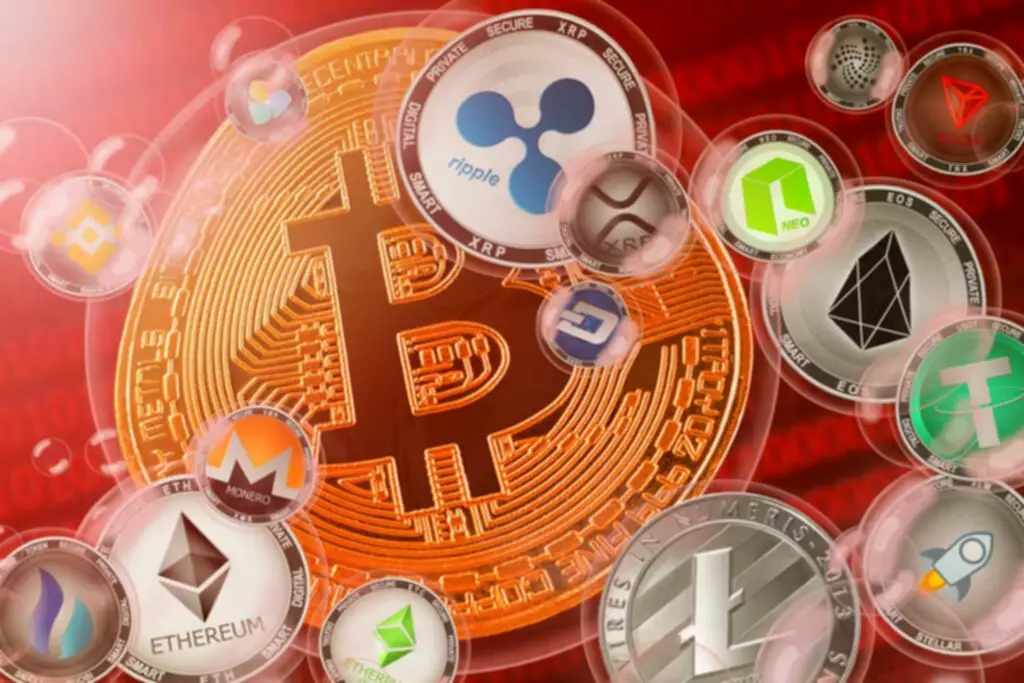Content
During the early days people used the bridge solution offered by the exchanges where they can swap their assets between different blockchains. Scalability – Bridges in DeFi greatly enhance the network scalability. Since it enables connection between the main chain and secondary chain it can distribute the transaction loads across their ecosystem.

We regularly publish content about Bitcoin, Ethereum, Altcoins, wallet guides, mining tutorials and trading tips. When it comes to Layer 2 protocols / sidechain environment both bridges and chains benefit from each other. For example chains notify bridges about the balances and the bridges used that information to aid the transfer / withdrawal process.
Blockchain Simplified
Not only that but most of them are developed in an isolated environments, and they operate under different consensus rules. As a result they have no way of communicating with other blockchains. With a growing set of Layer 1 networks and Layer 2 side chain protocols the future of DeFi is cross-chain that will be bridging different networks and bringing DeFi to the masses. All in one Platform – Complete responsibility of entire software development of the platform ,for a $1m funded blockchain start up, led by a team of serial entrepreneurs and tech veterans in Silicon Valley. An interoperable blockchain sector is critical to the industry’s future success. Not only it benefits the end users but is also valuable for the entire cryptocurrency ecosystem.
What Are Blockchain Bridges and How Do They Work? – CoinDesk
What Are Blockchain Bridges and How Do They Work?.
Posted: Mon, 07 Mar 2022 08:00:00 GMT [source]
So that they can use dapps interchangeably and leverage other DeFi services more efficiently. These bridges are also called as wrapped bridges that issues pegged tokens matched one to one on either blockchain. One of the most popular trust based bridge scenario is the initiative that enables hodlersof Bitcoin to transfer their BTC as Wrapped Bitcoin to Ethereum blockchain.
However, this would incur transaction fees and expose you to price volatility.
Whats The Future Of Blockchain Bridges?
There are many decentralized cross-chain bridges – A new type of protocol that made possible for users to transfer assets between blockchain without the need of centralized third party service. Now users can move their assets across different blockchains in an automatic and in a permission-less way. Now that we’ve understood the benefits of bridges in blockchain lets see how cross chain swaps work. Another example of a blockchain bridge is the RSK token bridge that enables interoperability between Bitcoin and Ethereum for the transfer of assets. Assets on blockchain A will unlock only when the equivalent amount of minted tokens on blockchain B gets burned or locked again. This prevents users from using the assets on both blockchains at the same time.
The entire development from scratch carried out by Blockchain Simplified. Custodial bridges require users to place their trust in a central entity to properly and safely operate the system. Users should do extensive research to ensure that this entity is trustworthy. Blockchain bridges can be categorized according to their functions, mechanisms, and levels of centralization.
Bridges in real world simply connect two distinct locations and communities so that the people can travel back and forth and resources can be exchanged freely. Axelar.network needs to review the security of your connection before proceeding. Hubrisone.com – is a Live app with 100,000+ downloads, All-in-One Cryptocurrency current account.
Axelar Network
It is basically a trusted centralized custodian wallet that stores your Bitcoin safely and mints equivalent wrapped BTC or tBTC tokens on the Ethereum network. Even though each chain run under different consensus rules bridges provide an inter-communicative, interconnected link that enables communication and interaction between the two distinct networks. Blockchain bridges help reduce network traffic on Ethereum by distributing it to other less congested blockchains, thus resolving Ethereum’s scalability challenges. Instant payment processing is also a very useful application of a blockchain bridge.
- They are side-chains, layer two protocols, sharding or parachains or EVM compatible blockchain that are mainly designed to provide scaling solutions.
- An interconnected network of blockchains can allow tokens and data to be exchanged between them smoothly.
- Cross-chain interoperability is the way to create maximum value for users.
- Similar to a private blockchain, a Federated blockchain bridge requires a user to meet certain criteria or demands set by the federation, to be part of the bridge.
- The xDai Bridge allows easy transfer of value between the two chains.
Non-custodial bridges operate in a decentralized manner, relying on smart contracts to manage the crypto locking and minting processes, removing the need to trust a bridge operator. In this case, the system’s security is as good as the underlying code. Centralized cross chain bridge uses centralized system and they are based on a third party trust.
Other than cross chain that connects two completely different networks there is also something called a sidechain bridge. A side chain bridge connects main chain that is https://xcritical.com/ parent blockchain to its child . Because since both L1 and L2 operate under different rules, there is a need for bridge in order to communicate between the two networks.
Benefits Of Bridges In Defi
Bitcoin, Ethereum, and BNB Smart Chain are some of the major blockchain ecosystems, all relying on different consensus protocols, programming languages, and system rules. When you initiate a transfer of assets from one blockchain to another using a bridge the assets are in fact not relocated or sent anywhere. Instead the transfer functionality is leveraged through a two step process and is all handled by the smart contract. Most bridges in order to transfer asset between chains they lock up the assets on source chain and mint equivalent amount of wrapped assets on the destination chain. They can even conduct micro-transactions on chain quickly and without having to worry about high transaction costs. Ability to conduct fast, low cost transaction simply enhances the DeFi and DApp experience.

Some blockchain bridges can handle a large number of transactions, improving efficiency. For example, the Ethereum-Polygon Bridge is a decentralized two-way bridge that works as a scaling solution to the Ethereum network. As a result, users can benefit from faster transactions and lower transaction costs.
SHC – Built entire platform and app from scratch for a $1m funded startup led by a team of Americans including PhD degree holders. Multinational Bank – The company helped one of the top 3 ranking Multinational Banks to integrate various cryptocurrencies into their banking application. VMW – Developed app for a multi-national company providing mass factory-to-factory shipment services. App is being used by 53 of the Fortune 500 companies such as John Deere, Coca-Cola, Nissan.
Token transfer doesn’t take place literally; rather when a token is needed to transfer from one blockchain to another, it is burned on the first and an equivalent token is minted on the other. 3) Thanks What is a Blockchain Bridge to Blockchain bridges, any data, information, tokens etc can be transferred between two blockchain platforms. The most important benefit of blockchain bridges is the ability to improve interoperability.
Benefits Of Blockchain Bridges
Decentralized cross chain bridges achieves cross chain swaps in a completely decentralized mechanism without the need of a middle man or an escrow. Similar to a private blockchain, a Federated blockchain bridge requires a user to meet certain criteria or demands set by the federation, to be part of the bridge. For example, the Wanchain blockchain bridge connects multiple isolated blockchains to one another to allow flow of the digital assets and data. It is an excellent example of blockchain bridges for decentralized finance.

They are needed because the parent and sidechain may have different consensus mechanisms. One example is xDai Bridge, which connects the Ethereum mainnet to Gnosis Chain , an Ethereum-based stable payment sidechain. XDai is secured by a set of validators different from those who maintain the Ethereum network. The xDai Bridge allows easy transfer of value between the two chains. A blockchain bridge is a protocol connecting two economically and technologically separate blockchains to enable interactions between them. These protocols function like a physical bridge linking one island to another, with the islands being separate blockchain ecosystems.
Allowing traffic between many blockchains and layers is beneficial during high transaction volumes especially when the main chain gets congested. Cross-chain collateral – Using cross chain bridge users can simply reap the rewards of all chains. One of the most popular scenario is Bitcoin users benefiting from the functionalities of DeFi on the Ethereum blockchain.
Whats A Blockchain Bridge?
Bitcoin on Ethereum becomes Wrapped Bitcoin , an ERC20 token where native BTC holders can trade around the well-established DeFi ecosystem and reap the rewards. Likewise using bridges in blockchain users can easily transfer tokens and other crypto assets between two or more networks. 2) Blockchain bridges, by linking two blockchain networks, aid dApps leverage the benefits of both the systems, instead of only their host platform. For instance, a dApp hosted on Ethereum and bridged with an EOS blockchain, can leverage Ethereum’s smart contract functionality as well as EOS’ scalability.
What Types Of Blockchain Bridges Are There?
While the centralized bridges are based on a third party trust; the decentralized or trustless cross chain bridges are based on a cryptographic mathematical trust. With separate rules and technologies, they need blockchain bridges to be interconnected. A blockchain ecosystem linked by bridges is more cohesive and interoperable, opening up opportunities for better scalability and efficiency. With numerous attacks on cross-chain bridges, the search for a more secure and robust bridge design continues. Sidechain bridges connect the parent blockchain to its child sidechain, enabling interoperability between the two.
What Lock Time Means In Bitcoin Transaction: Locktime: Block Height, Date?
The internet is a revolutionary system partly because of its high interoperability. Blockchain bridges are critical to enhancing the blockchain industry’s interoperability and mass adoption. They have enabled some essential innovations, allowing users to exchange assets between many blockchain protocols. Blockchain bridges have grown significantly in the number of bridges, users, and total transaction volume. Binance Bridge, for example, you will first select the chain you’d like to bridge from and specify the amount.
Unlike CEX in a decentralized system users don’t have to sign up and there is no collection of user data either. Instead of putting trust in a centralized authority; users place their trust in the mathematical truth. In blockchain system the mathematical truth is achieved when the computer nodes or when a program reaches a common agreement in accordance to the rule specified in the underlying blockchain’s codebase.
As Web 3 continues to expand bridges become more crucial as they open doors across the ecosystem. Cross-chain interoperability is the way to create maximum value for users. Also in order to ensure scalability and connectivity among the DeFi ecosystem the need to connect blockchains becomes critical. While these are building a parallel DeFi ecosystem to Ethereum there is also an increase in the number of new blockchains being launched. They are side-chains, layer two protocols, sharding or parachains or EVM compatible blockchain that are mainly designed to provide scaling solutions.
For example the value of 1 BTC on Bitcoin Network is always equal to 1WBTC on Ethereum Network. Also the total amount of circulating supplyof tokens remains the same on both the chains but is split between the two chains. Each blockchain is unique and each have their own features and functionalities.

Comentarios recientes